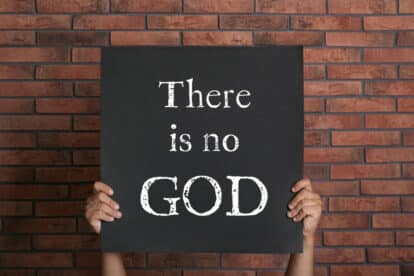Here is a list of books that were commonly read in elementary schools from the 1960s through the 1980s and are now banned or challenged in some states. Do you agree or disagree? Does your state ban any of these books? Do you let your children read “banned” books?
The History of Banned Books in the United States

The history of book banning in the United States is a long and complex narrative that intertwines with the nation’s evolving cultural, political, and legal landscapes. From the earliest days of the Puritan settlers to the contemporary debates over educational content, the act of banning books has been a contentious issue, reflecting broader societal tensions and conflicts.
Early Instances of Book Banning

The first recorded instance of book banning in what is now the United States occurred in 1637. Thomas Morton’s New English Canaan, a critical examination of Puritan customs and power structures, was banned by the Puritan government in Quincy, Massachusetts, marking the beginning of the American history of censorship.
The Comstock Law of 1873

A significant milestone in the history of book censorship in the United States was the enactment of the Comstock Law in 1873. This federal law, aimed at suppressing the trade in and circulation of “obscene literature and articles of immoral use,” effectively criminalized the distribution of a wide range of materials, including erotica, contraceptives, and any information pertaining to them. The law represented an attempt to impose moral standards on the public through censorship.
The 20th Century: Modernist and Progressive Writers

The 20th century saw an increase in the banning of books as modernist and progressive writers began their literary careers, often challenging societal norms and expressing controversial opinions on subjects such as sexuality, race, and politics. Authors like James Joyce, Ernest Hemingway, and John Steinbeck faced censorship for their candid explorations of these themes.
Religious and Ideological Censorship

Throughout American history, religious beliefs have motivated many instances of book censorship. Works that attacked or disagreed with prevailing religious views were often targeted. For example, Charles Darwin’s On the Origin of Species faced challenges for its theories on evolution, which contradicted biblical creation narratives. Similarly, fantasy works like the Harry Potter series have been challenged for promoting witchcraft and the occult.
1. “Charlotte’s Web” by E.B. White

Banned for featuring talking animals, which some groups found disrespectful to God.
2. “Where’s Waldo?” by Martin Handford

Banned due to a depiction of an undressed bather in one of the illustrations.
3. “The Lorax” by Dr. Seuss

Banned for its perceived anti-logging industry message.
4. “James and the Giant Peach” by Roald Dahl

Banned for language and references to tobacco and alcohol.
5. “Anne Frank: The Diary of a Young Girl” by Anne Frank

Banned for sexually explicit material and being considered a “downer”.
6. “In the Night Kitchen” by Maurice Sendak

Banned for illustrations depicting a child’s bare bottom.
7. “Harriet the Spy” by Louise Fitzhugh

Banned for encouraging children to lie, spy, and back-talk.
8. “Bridge to Terabithia” by Katherine Paterson

Banned for themes of death and its portrayal of religion.
9. “A Wrinkle in Time” by Madeleine L’Engle

Banned for its religious content and themes of witchcraft.
10. “The Adventures of Huckleberry Finn” by Mark Twain

Banned for its use of racial slurs and themes of racism.
11. “The Giving Tree” by Shel Silverstein

Banned for being considered sexist.
12. “Brown Bear, Brown Bear, What Do You See?” by Bill Martin Jr.

Banned due to a mix-up with another author of the same name who wrote a book on Marxism.
13. “The Wizard of Oz” by L. Frank Baum

Banned for its portrayal of strong female characters and witchcraft.
14. “To Kill a Mockingbird” by Harper Lee

Banned for its use of racial epithets and themes of racial injustice.
These books have been challenged or banned for various reasons, including language, themes, and illustrations that some groups found objectionable.
The Rise of Book Bans in Schools

In recent years, there has been a significant surge in the banning of books in schools and libraries, with a record-breaking number of attempts to ban books reported in 2022. This contemporary wave of censorship has been driven by concerns over content related to the LGBTQ+ community, race, and other sensitive issues. Notably, the American Library Association documented over 4,300 books removed from schools across 23 states in just the first half of the 2023 academic year, surpassing the total number of book bans recorded during the entire previous academic year.
Legal and Societal Responses

The legal landscape surrounding book bans is complex. The Supreme Court case Island Trees School District v. Pico (1982) addressed the issue, ruling that local school boards cannot remove books from school libraries simply because they dislike the ideas contained in those books, citing students’ First Amendment rights. Despite this, the battle over book bans continues, reflecting ongoing debates about freedom of expression, educational content, and the role of schools and libraries in society.
The Takeaway

The history of banned books in the United States is a testament to the enduring tensions between freedom of expression and the desire to protect societal morals and values. As American society continues to evolve, the debate over what constitutes acceptable reading material remains a vivid illustration of the broader struggles over cultural norms, education, and the limits of free speech.
Toys We Played With in the 80s and 90s We Would Never Let Kids Play With Now

The 1980s and 1990s were vibrant decades for the toy industry, producing many beloved toys that are fondly remembered by those who grew up during this time. However, several of these toys would be considered dangerous by today’s safety standards. Here are some of the most iconic yet hazardous toys from the 1980s and 1990s:
READ: Toys We Played With in the 80s and 90s We Would Never Let Kids Play With Now







